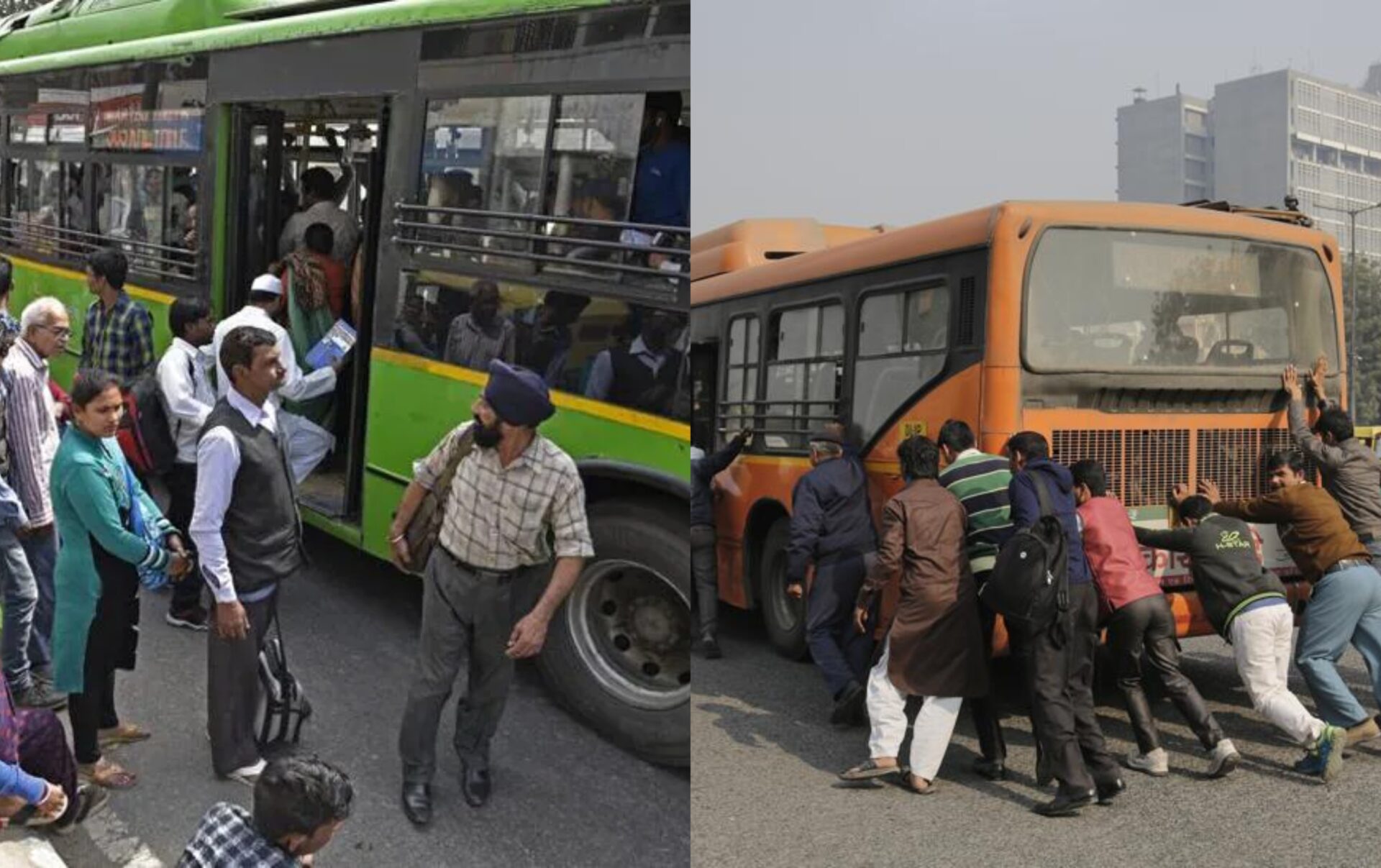‘The number of daily breakdowns sometimes is as high as 400 in the whole of Delhi, but on an average, it’s around 200’.
NEW DELHI
With an average 200 breakdowns every day, including both in depot as well as on roads, the ageing fleet of Delhi Transport Corporation’s CNG buses is struggling to serve the 3.3 million daily city passengers, besides posing safety hazards to road users by forcing traffic jams.
The wear and tear of the 3,360 CNG buses has had a bearing on their condition even as the retiring CNG-run buses, bought between 2008 and 2011 ahead of the Commonwealth Games, gradually make way for new electric variants.
After 2011 till 2022, no new CNG-run buses were added to DTC fleet despite the fact that many of the vehicles have logged over 7.6 lakh kms or served for over 12 years–parameters used to fix a vehicle’s life cycle.
A source posted in the Vinod Nagar depot said: “The depot has around 110 buses, out of which a maximum of 90 are operational, as there are frequent breakdowns. After some repair work, the buses are made to run on routes that they later breakdown on in a day or two. We cannot operate our whole fleet as buses face frequent breakdowns. Similar is the case with Shivaji Stadium Terminal, where, on average, 5-6 buses are put out of service due to breakdowns. These breakdowns have a negative impact as they have to cut some routes, which ultimately makes commuters wait for long hours during peak time. The breakdowns not only impact the DTC, but they are also a headache for traffic management as the buses breakdown in the middle of the road, resulting in traffic jams.”
An official said the number of daily breakdowns sometimes is as high as 400 in whole of Delhi, but on an average, it’s around 200. Another insider in DTC said the Rajghat depot will have 20 buses that have completed their life cycle. They will not operate. This will eventually make the count of buses in service low. He also said that gradually, the buses that have completed their life cycle will eventually remain in depots and will not operate. By year-end, around 700 buses will retire. The DTC has also cut some routes because of the unavailability of buses. Since no new buses have been inducted and since DTC is phasing out CNG buses that have completed their life cycle, it has resulted in an overall drop in the frequency of buses.
Kalyani Singh, a Delhi University student, said: “Since last month, the frequency of buses has dropped, which has made me shift to Metro as the wait time for buses was around half an hour to one hour.”
An official said, “Currently, DTC has 3,760 buses in its fleet and 800 electric buses inducted under the central government’s Faster Adoption and Manufacturing of Hybrid and Electric Vehicles (FAME) 2 scheme. The scheme, launched in 2019, is aimed at promoting the adoption of electric vehicles in the country with the large goal of checking vehicular pollution and reducing its impact on the environment. Except for the electric buses, the rest of the DTC fleet has either crossed the life cycle or is nearing completion. These buses are more than 10-12 years old; they were purchased in 2008, but despite that, they are playing on the road, risking the lives of commuters.”
According to the data, DTC has 3,910 buses, while there are 3,240 cluster buses, which total 7,150, which is less than the required number of 11,000 buses. This number was put forward by the AAP government for the smooth movement of public transport.
Saurabh Tuteja, a transport expert, said that by retiring old buses and not inducting new buses, the condition of public transport will deteriorate, and ultimately, the public will suffer. “Moreover, when we compare our national capital with other cities around the globe, public transport in those cities is far better than ours. The state should talk with the Centre about the procurement of new buses,” Tuteja said. On breakdowns, Tuteja said: “If you use something after its life is over, it will simply stop working. The condition of DTC buses is such that when you go out on the road, you’ll see buses breaking down, which ultimately affects traffic too.” Moreover, on procurement, Tuteja said: “The Delhi government should ensure that the number of new buses coming should be in proportion to the number of retiring buses. You cannot blame the Centre for everything and simply run away from your duties. It’s the responsibility of the Delhi government to make a bridge with the Centre and not blame them for everything you fail to do and let the public suffer.”
Ramvir Singh Bidhuri, the leader of the Opposition in the Delhi Assembly, also raised the issue of breakdown in the Assembly. He said, “The DTC’s fleet of CNG buses has surpassed its lifespan. In the past eight years, the Delhi government has hardly bought new CNG buses. The ageing buses are increasingly prone to catching fire, posing a threat to the lives of commuters.”
The Sunday Guardian tried to contact the Delhi Transport Minister and DTC officials regarding the breakdown of buses and the roadmap for procuring new buses, but they did not comment on this issue.

